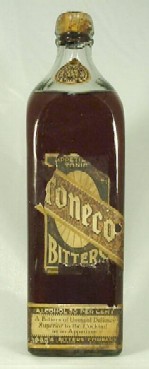
Note: Few if any of the elixers were actually patented — these were medicines with trademarks, not patented medicines. The phrase patent medicine comes from the late 17th century marketing of medical elixirs, when some were issued letters patent authorizing use of a royal endorsement in advertising.
A series of articles in Collier’s magazine, published in 1905-06, began with these words:
Gullible America will spend this year some seventy-five millions of dollars in the purchase of patent medicines. In consideration of this sum it will swallow huge quantities of alcohol, an appalling amount of opiates and narcotics, a wide assortment of varied drugs ranging from powerful and dangerous heart depressants to insidious liver stimulants; and, far in excess of all other ingredients, undiluted fraud.
Samuel Hopkins Adams, The Great American Fraud 36 COLLIER’S 14 (Oct. 7, 1905).
This series of articles contributed to the pressures to enact laws regulating the food and drug industries, ultimately resulting in the Federal Food, Drug, and Cosmetics Act (FD&C Act).
Since 1962, before a new drug can be marketed in the US, the Food and Drug Administration (FDA) must approve it, after it is shown to be safe and effective. This has not been without side-effects since the FDA requirement that a new drug is safe and effective, which ordinarily means that a company must complete clinical trials, which increased the cost of developing new drugs and delays their introduction.
According to conventional wisdom, the cost and delay involved in this process lessens incentives to invest in the development of new drugs. Accordingly, several reforms aimed at restoring such incentives have been implemented and many others have been advocated.
One way that drug companies are compensated for the regulatory burden is the extension of patent terms. In the US, the Drug Price Competition and Patent Term Restoration Act of 1984 (Hatch-Waxman Act) makes it possible for drug patentees to have the term of their patent extended for as much as five years if they meet certain criteria. In the EU, there is the Supplementary Protection Certificate (SPC).
Ariel Katz, Assistant Professor at the University of Toronto, has now published a paper looking at some of the effects of regulation in the drug industry entitled “Pharmaceutical Lemons: Innovation And Regulation In The Drug Industry.”
This paper looks at the argument that drug regulation and drug innovation are at odds with each other and shows that the regulatory framework is not solely a burden imposed on the industry; it also provides a valuable service to the industry, that is, drug regulation provides certification of drug quality. This certification contributes to the value of new drugs and may actually encourage innovation.
Prof. Katz now challenges the argument that new drug regulation negatively affects the incentives for new drug innovation. It’s good food for thought on the ripple effects of drug regulations.
This paper, published in 14 Michigan Telecommunications and Technology Law Review, can be downloaded without charge at the Social Science Research Network Electronic Paper Collection.
[Side note: Some consumer products were once marketed as patent medicines but have been reformulated and are no longer sold for medicinal purposes. Their original ingredients may have been changed to remove drugs, such is the case with Coca-Cola®. Others, like Vicks VapoRub® still exist.]

Weakening the FDA seems ill-advised, especially after yesterday’s new reports that the “placebo effect” is enhanced when people pay more for the ineffective medicine (http://www.npr.org/templates/story/story.php?storyId=87938032). Combined with today’s marketing strategies, it spells disaster, IMO.